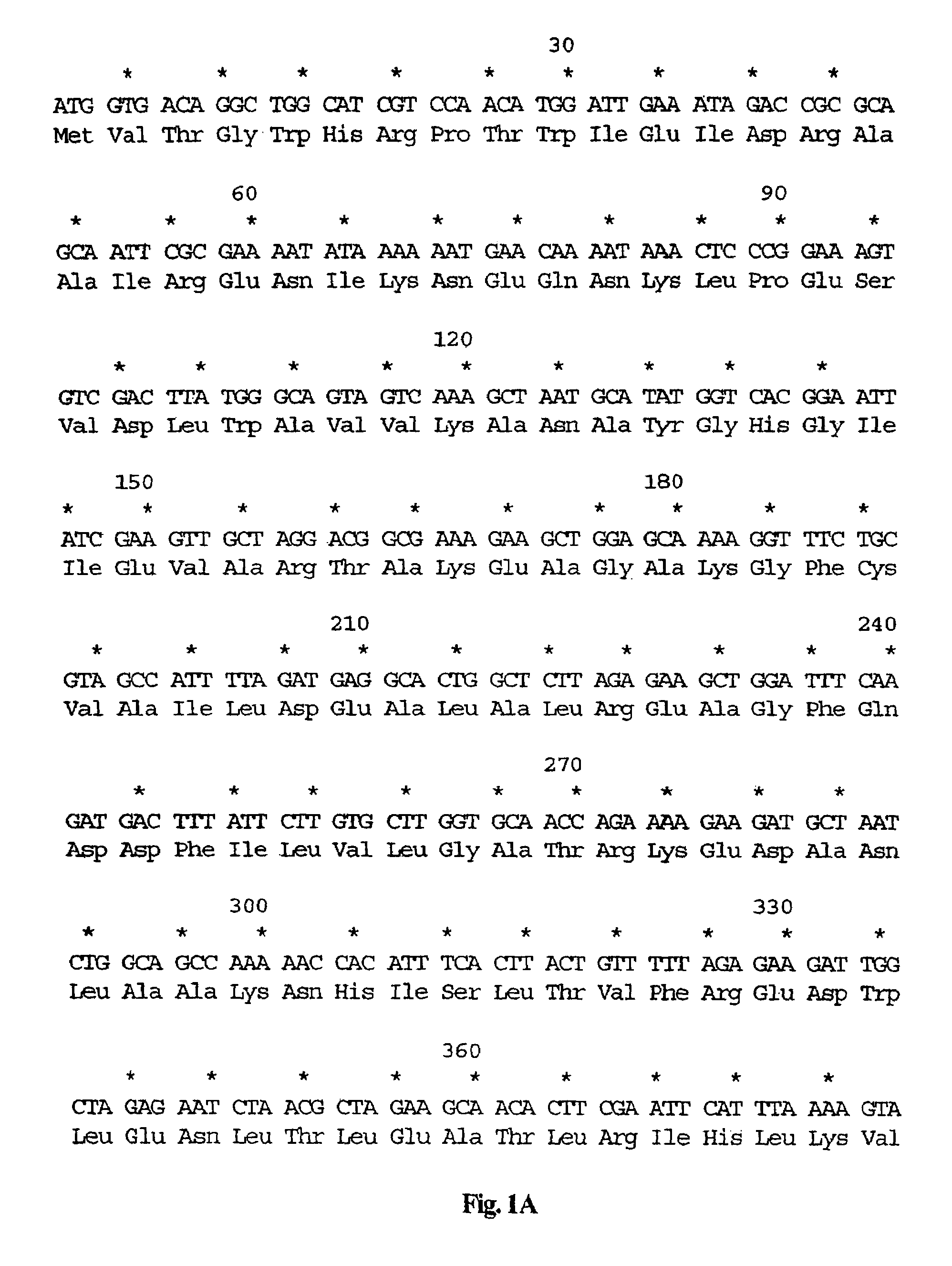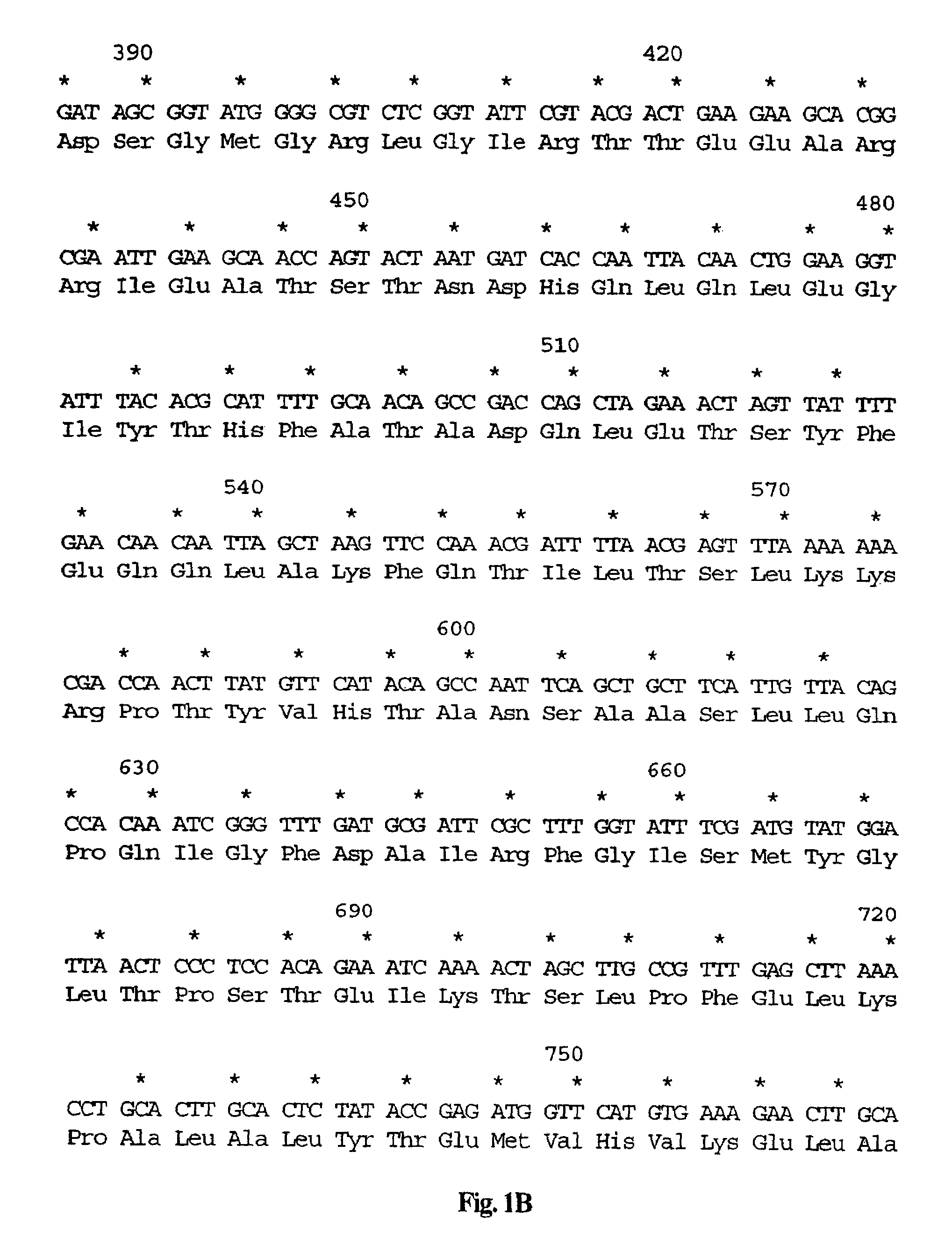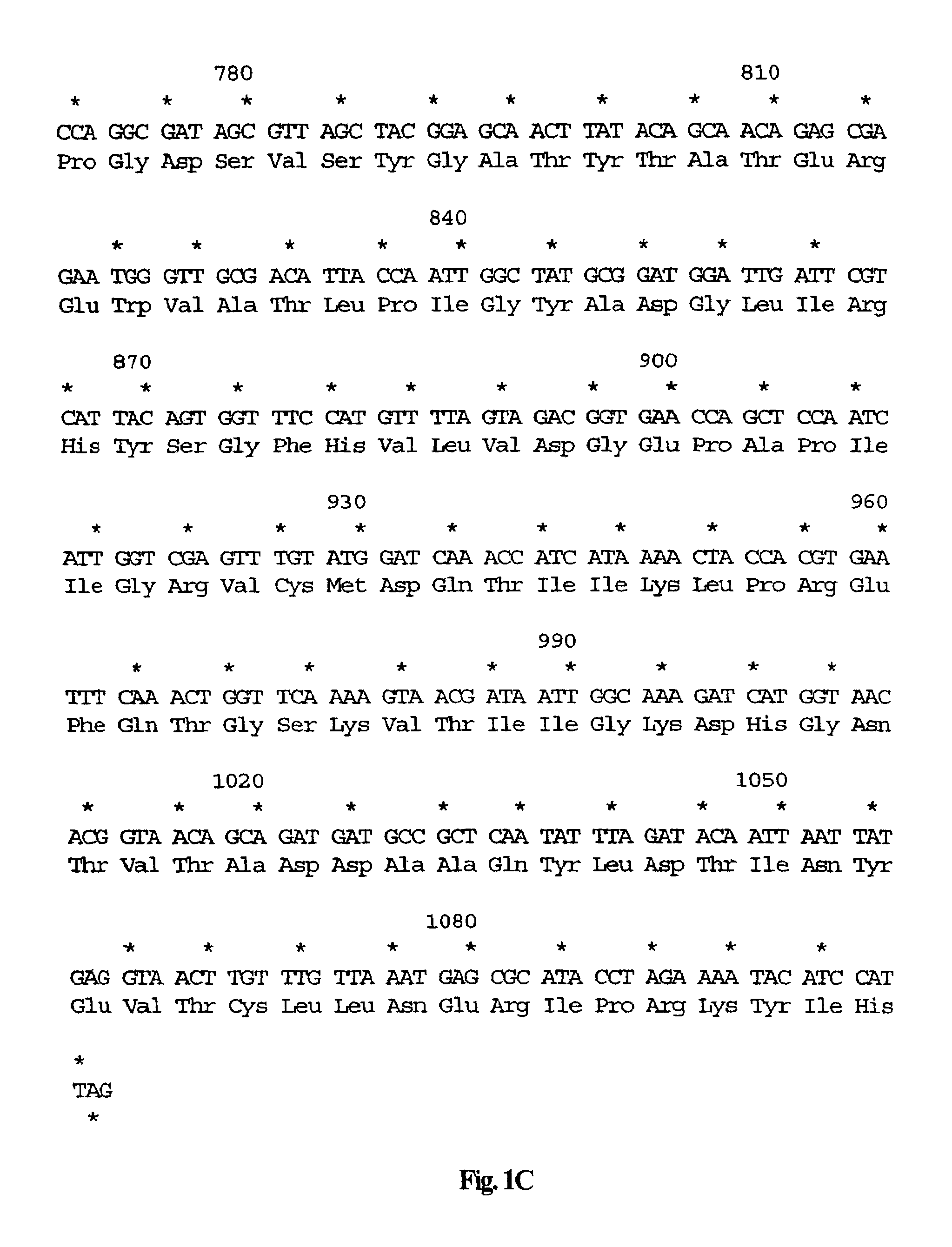Methods of inducing immune responses through the administration of auxtrophic attenuated dal/dat double mutant Listeria strains
a listeria and auxtrophic attenuation technology, applied in the field of bacteria-based vaccine vectors, can solve the problems of high mortality rate of infected individuals, accompanied by potentially severe side effects, and increased mortality of infected individuals
- Summary
- Abstract
- Description
- Claims
- Application Information
AI Technical Summary
Benefits of technology
Problems solved by technology
Method used
Image
Examples
Embodiment Construction
[0032]The present invention relates to vaccines comprising attenuated strains of Listeria, wherein the bacteria have been attenuated by the introduction of auxotrophic mutations in the Listeria genomic DNA. These strains are herein referred to as attenuated auxotrophic strains or “AA strains” of Listeria.
[0033]It has been discovered in the present invention that the administration of an AA strain of Listeria to a mammal results in the development of a host cytotoxic T cell (CTL) response directed against Listeria following survival of the AA strain in the mammal for a time sufficient for the development of the response. The AA strain provides protection against challenge by L. monocytogene and is therefore suitable for use in a vaccine for protection against infection by this organism. The AA strain of the invention may thus be employed as a vaccine for the prevention and / or treatment of infection by Listeria. In addition, the AA strain of the invention may have added to it a heter...
PUM
| Property | Measurement | Unit |
|---|---|---|
| temperature | aaaaa | aaaaa |
| temperature | aaaaa | aaaaa |
| temperature | aaaaa | aaaaa |
Abstract
Description
Claims
Application Information
 Login to View More
Login to View More - R&D
- Intellectual Property
- Life Sciences
- Materials
- Tech Scout
- Unparalleled Data Quality
- Higher Quality Content
- 60% Fewer Hallucinations
Browse by: Latest US Patents, China's latest patents, Technical Efficacy Thesaurus, Application Domain, Technology Topic, Popular Technical Reports.
© 2025 PatSnap. All rights reserved.Legal|Privacy policy|Modern Slavery Act Transparency Statement|Sitemap|About US| Contact US: help@patsnap.com



